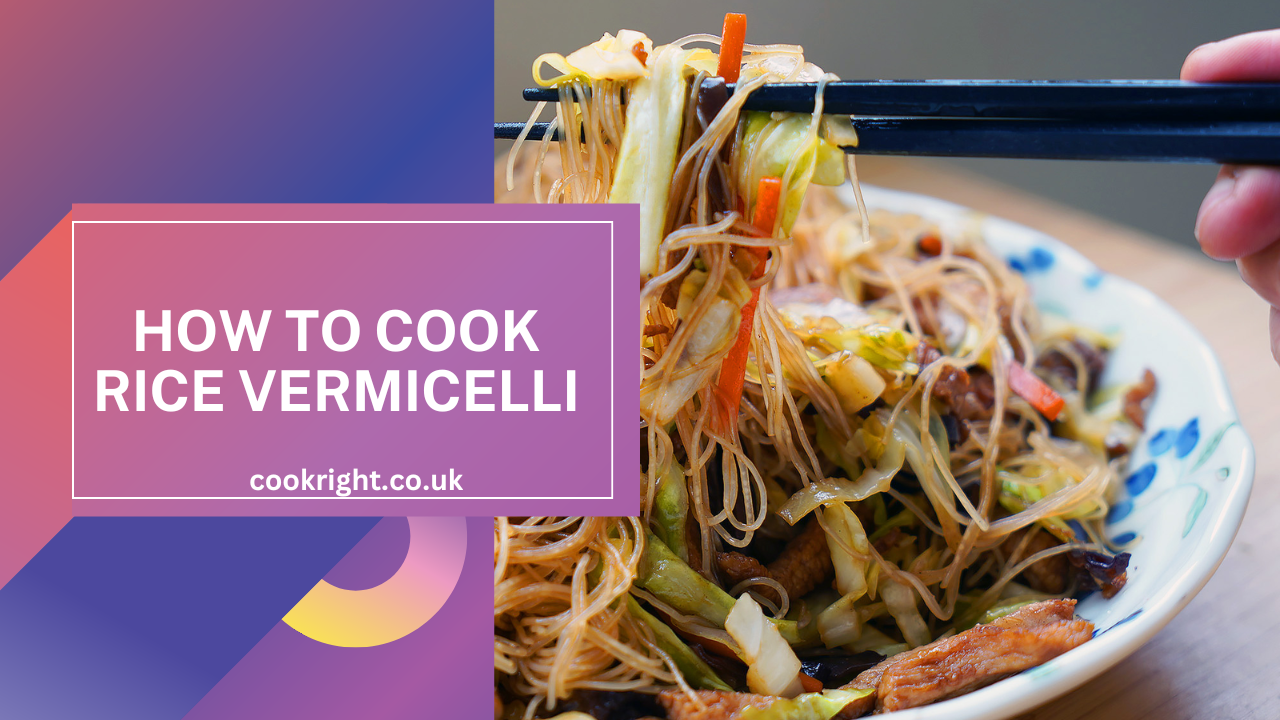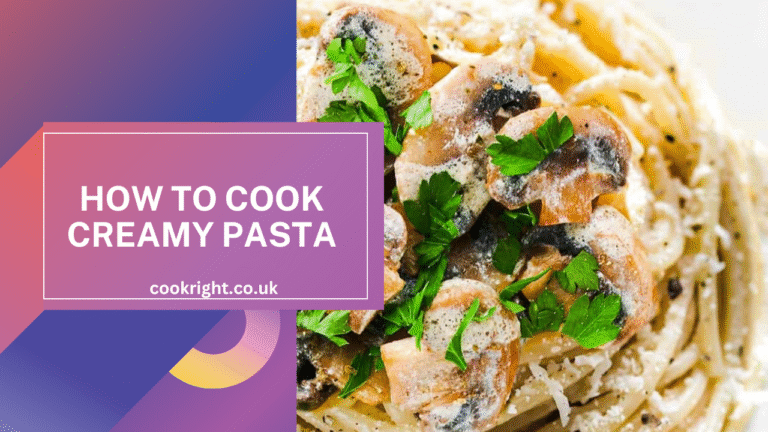If you love Asian cuisine, then rice vermicelli — those thin, delicate noodles made from rice flour — have probably caught your attention. They’re light, versatile, and form the base for many delicious dishes across Asia, from Vietnamese pho and spring rolls to Singapore noodles and Thai stir-fries.
However, cooking rice vermicelli can be tricky for beginners. Overcook it, and it turns mushy. Undercook it, and it stays hard and chewy.
In this guide, you’ll learn exactly how to cook rice vermicelli perfectly every time — whether you’re using it for soups, salads, stir-fries, or wraps.
What Is Rice Vermicelli?
Rice vermicelli, also known as rice noodles, rice sticks, or bee hoon, are thin noodles made primarily from rice flour and water. They are naturally gluten-free and cook quickly, which makes them a great option for people looking for light and healthy meals.
These noodles are commonly used in:
- Vietnamese dishes such as Bún Chả and Gỏi Cuốn (spring rolls)
- Malaysian Mee Siam
- Singaporean Fried Bee Hoon
- Chinese stir-fried or soup-based dishes
Ingredients and Tools You’ll Need
Before you begin, gather the following:
Ingredients
- 200 grams of rice vermicelli
- 4–6 cups of water (depending on the size of your pot)
- A pinch of salt (optional)
- A teaspoon of vegetable or sesame oil (optional, to prevent sticking)
Tools
- A large pot
- A colander or fine strainer
- A large bowl (if you’ll be soaking the noodles)
- A pair of tongs or chopsticks for stirring
Step-by-Step Guide on How to Cook Rice Vermicelli
Step 1: Boil the Water
Fill a large pot with water and bring it to a rolling boil. Make sure there’s enough water to fully submerge the noodles, as they expand slightly while cooking.
Step 2: Soak or Boil the Vermicelli (Depending on the Type)
Different brands of rice vermicelli require slightly different cooking methods. Always check the package instructions first, but here are two main methods:
Method 1: Soaking (for thin vermicelli)
- Turn off the heat once the water starts boiling.
- Add the rice vermicelli into the hot water.
- Let it soak for 3 to 5 minutes, or until the noodles turn tender but not mushy.
- Stir occasionally to ensure even softening.
Method 2: Boiling (for thicker vermicelli)
- Keep the water boiling.
- Add the rice vermicelli and cook for 2 to 3 minutes, stirring gently.
- Taste a strand to check for doneness — it should be soft yet slightly firm to the bite (al dente).
Step 3: Drain Immediately
Once the noodles are cooked, pour them into a colander and drain off the hot water completely. Run the noodles under cold running water to stop the cooking process and prevent them from sticking together.
Step 4: Add Oil (Optional)
If you’re not using the noodles immediately, drizzle a small amount of vegetable or sesame oil and toss gently. This will help keep them separate and glossy.
How to Use Cooked Rice Vermicelli
Once your rice vermicelli is ready, you can use it in a variety of ways:
- Stir-Fries:
Toss the noodles with soy sauce, vegetables, and your choice of protein such as shrimp, chicken, or tofu.
Example: Singapore-style fried vermicelli. - Soups:
Add the noodles to hot broth with meat, herbs, and chili.
Example: Vietnamese pho or Thai noodle soup. - Salads:
Mix cold rice noodles with fresh vegetables, herbs, and tangy dressings.
Example: Vietnamese vermicelli salad with grilled pork. - Spring Rolls:
Use the noodles as filling inside rice paper rolls with lettuce, shrimp, and mint leaves.
Common Mistakes to Avoid
- Overcooking:
Rice vermicelli cooks very fast. Leaving it in hot water for too long can make it mushy and clumpy. - Skipping the Rinse:
Always rinse the noodles in cold water after cooking to stop further softening. - Not Reading the Package Instructions:
Some brands are very thin and require only soaking, while others need light boiling. - Letting It Sit Too Long:
If you plan to use the noodles in a stir-fry, cook them slightly underdone so they don’t fall apart when heated again.
Storage Tips
- Refrigeration:
Store leftover cooked vermicelli in an airtight container for up to 3 days in the refrigerator.
To reheat, briefly dip the noodles in hot water or microwave them for 30 seconds. - Freezing:
While possible, freezing is not ideal as rice vermicelli can lose its texture. Freshly cooked is always best.
Final Thoughts
Cooking rice vermicelli is simple once you understand the timing and temperature. The key is to treat the noodles gently — soak, rinse, and drain carefully. Within minutes, you’ll have a base that can pair beautifully with countless Asian dishes, from soups to stir-fries and salads.
Mastering how to cook rice vermicelli perfectly will make your homemade Asian recipes taste fresher, lighter, and more authentic.
So, grab a pack, boil some water, and get cooking — a bowl of flavorful noodles is only a few minutes away.




